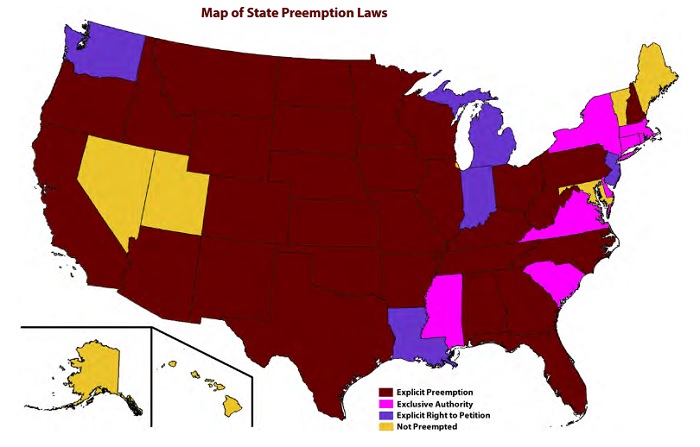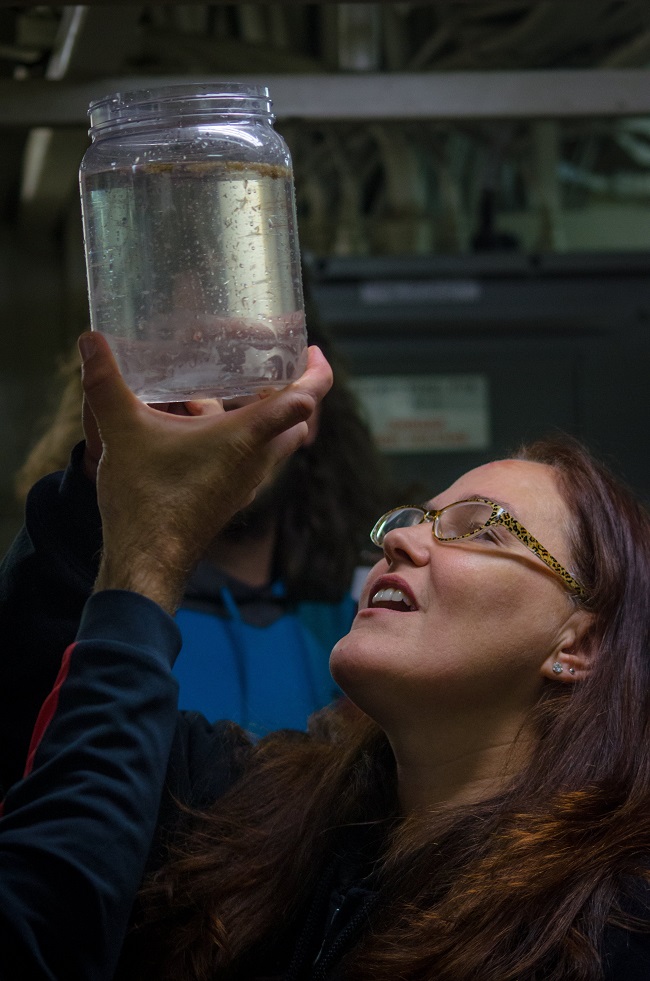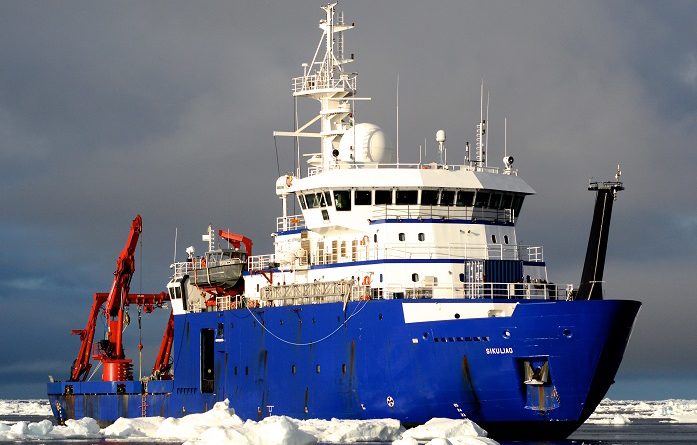March 25, 2018 – Microcosm Rides Again!
![]() Peggy and I are talking about the Flower Show again this week, but instead of Navy Pier, the venue is Macy’s State Street in Chicago’s Loop, for the 2018 version of the annual Macy’s Flower Show, titled “Once Upon a Springtime.” Macy’s describes their floral exhibits as
Peggy and I are talking about the Flower Show again this week, but instead of Navy Pier, the venue is Macy’s State Street in Chicago’s Loop, for the 2018 version of the annual Macy’s Flower Show, titled “Once Upon a Springtime.” Macy’s describes their floral exhibits as

over-the-top presentations of lavish gardens that showcase millions of live flowers, plants and trees from around the globe. Native to many different landscapes, Macy’s Flower Show features floral material blooming in unison despite their unique climatic DNA. Taking root in unexpected settings such as store countertops, windows and specially-designed architecture, including grand bridges, columns and topiaries, Macy’s Flower Show will be staged in distinct fashion at Macy’s on State Street.
The floral displays are real life illustrations of the official storybook, which is available here in pdf form. On the first floor, you will encounter gardens like The Meadows (in the handbags area), described this way,
Just beyond the castle walls lies home to the colorful flora and friendly fauna of our fantastical land. Stroll through and say hello to the rabbit family who resides in a towering hollowed out tree surrounded by blue fountain grass, hyacinth, salvia, gerber daises, liriope and zinnia. It’s beginning to feel like Spring!
or Spring’s Castle (fine jewelry),
Discover the magical kingdom of Spring, our story’s heroine. Her knights stand guard at the entrance to the castle walls. Her majestic land is filled with a vibrant palette of spring blooms including cherry trees, forsythia, pink cordyline, tulips, daffodils and ranunculus.
The Fifth Floor Kids’ Department houses The Homewood Suites by Hilton Garden featuring Lewis the Duck, and the Girl Scouts USA “G.I.R.L. Hero” Garden, which is a photo op that lets kids see themselves as a heroic character who’s prepared to take on the world’s challenges.
The show runs for two weeks, March 25 through April 8, with the exception of Easter Sunday, April 1, when the store is closed. During that time, there are accompanying dance performances, tea leaf readings, live floral paintings, chef demos, tours and more.
This morning, Peggy and I welcome Paul Lopacinski, who is the Senior Manager of Creative Production for Macy’s. He oversees the team that produces Macy’s Chicago Flower Show and Santa Land; as well as the iconic Macy’s Great Trees in Chicago (The Walnut Room), Atlanta and San Francisco. He began his career with Marshall Field’s more than 20 years ago, and is a graduate of Columbia College in Chicago.
**********

Take a look at the above map. Wherever you see dark red–and if you lost count, the total is 43 states–local municipalities are unable to pass pesticide laws that are more restrictive than those at the state level. If you’re wondering why this is the case in so many states, Beyond Pesticides writes reports in 1991, the U. S. Supreme Court ruled that federal law does not preempt local jurisdictions from restricting the use of pesticides more stringently than the federal government. The pesticide industry was watching.
However, the ability of states to take away local authority was left in place. The pesticide lobby immediately formed a coalition, called the Coalition for Sensible Pesticide Policy, and developed model legislation that would restrict local municipalities from passing ordinances regarding the use or sale of pesticides on private property. The Coalition lobbyists descended upon states across the country, seeking and passing, in most cases, preemption legislation that was often identical to the Coalition’s wording.
If you think that kind of law is undemocratic, you’re not alone. In 2016, Go Green Oak Park presented a petition to the Village Board. It had been signed by 600 residents, and it had four specific requests:
- Adopt policies that ban the use of toxic chemicals on Village property, and require the use of organic land and integrated pest management;
- Conduct an official campaign to discourage the use of toxic chemicals and pesticides by private and institutional property owners;
- Establish a program to educate and certify merchants, pest control and lawn-care companies in the sale and use of non-toxic products and services;
- Adopt a resolution encouraging the Illinois General Assembly to repeal the state preemptive statute which denies home rule to Illinois county and municipal governments in the regulation of pesticide and chemical use.
They note that the City of Evanston has passed a similar resolution, and they are urging other municipalities to do the same.
Peggy McGrath and David Holmquist from Go Green Oak Park join us in the studio this morning to talk about this issue and to promote a couple of upcoming public lectures by retired Canadian Department of Agriculture soil biologist and genetic scientist Dr. Thierry Vrain.
**********
The Science Desk is open for business again this morning, which means that our favorite scientist/researcher/filmmaker Michele Hoffman is back in studio. She and her crew are getting ready to set sail for the Gulf of Alaska to study biodiversity with scientists at of University of Alaska Fairbanks. But this time, you can join her and the crew!
 On April 16th Michele Hoffman Trotter and her team will join forces with scientists from University of Alaska Fairbanks on board the National Science Foundation Vessel RV Siquliak to explore biodiversity in the Gulf of Alaska. Michele’s team is rounded out by Education and Media Specialist Carlee Belt who happens to be an alum of Columbia College Chicago and former student of Michele’s! The dream team is rounded out by Director of Photography Alaskan-born Katherine Brennan, who’s body of work includes cinematography for the show Building Alaska.
On April 16th Michele Hoffman Trotter and her team will join forces with scientists from University of Alaska Fairbanks on board the National Science Foundation Vessel RV Siquliak to explore biodiversity in the Gulf of Alaska. Michele’s team is rounded out by Education and Media Specialist Carlee Belt who happens to be an alum of Columbia College Chicago and former student of Michele’s! The dream team is rounded out by Director of Photography Alaskan-born Katherine Brennan, who’s body of work includes cinematography for the show Building Alaska.
In addition to shooting new and exciting footage for the documentary project Microcosm, they are adding a whole new dimension to the work in the way of virtual education. Two programs are in the works, one aimed at adult learners and the other for schools and/or homeschooling families with a target range of 6th to 12th grade. Topics to be included in the programs include biodiversity, climate change, food web interactions and female leadership. Chat rooms, video links, and blogs will allow you to journey with the team to the wilds of Alaska, so be sure to tune in Sunday morning and find out how!
I love it when Michele writes my marketing copy for me.
Anyway, if you’re interested in the adult program, here are the steps.
- The program is being offered at a special introductory rate of $50. Prior to the start of the program, all enrolled participants will receive a package containing instructions on how to view video links, blogs and chats. The program will go live April 16, 2018 and conclude May 5, 2018. New videos and blogs will be uploaded every day for the duration of the program, chat rooms will remain open for the duration of the voyage.To enroll follow these steps:
1) Visit this web page: https://microcosmfilm.wordpress.com/
2) Click on the donate button and put in the payment amount.
3) In the following field where you input billing information there is an icon option to “write a
note” just below the dollar amount.
4) Click on the “write a note” icon and indicate “Adult ED” program, the e-mail address you
wish to use to receive confirmation and information, and how you want us to address you. - For students in grades 6-12, although the program retails for $100 per module, it is being offered at a special introductory rate of $25 per module or $60 for the three-part bundle. Every enrollment will come with access to bonus materials on the subject of female leadership that includes interviews with female scientists, filmmakers, and crew of the Sikuliaq.Prior to the start of the program, all enrolled participants/classrooms will receive a package containing an introductory powerpoint presentation, supplemental reading, and an activity guide. The program will go live on April 16, 2018 and conclude on May 5, 2018.New videos for each module will be uploaded every day for the duration of the program, and links to upload questions for the science team will remain open for the duration of the voyage.
Here’s how to enroll:
1) Visit this web page: https://microcosmfilm.wordpress.com/
2) Click on the donate button and put in the amount you wish to pay.
3) In the following field where you input billing information there is an icon option to “write a note” just below the dollar amount.
4) Click on the “write a note” icon and tell us which program you are signing up for, the e-mail address you wish to use to receive confirmation and information, and how you want us to address you/your class.
Not only does Michele join us in studio tomorrow, but she is bringing her son, Ryan Trotter, the youngest member of team Microcosm. Since age 5 he has traveled to Canada, Alaska, Hawaii and more to explore the microscopic universe in the ocean with his marine biologist mom. Ryan is a recently certified scuba diver, YouTube host and adventurer in his own right and he will have a few words about why kids and adults alike should take the time to learn about the natural world.
**********
Crate Free Illinois is a group that works to eliminate the misery of livestock by encouraging consumers to make more humane food choices, legislators to pass more laws to protect farm animals; and producers to move away from inhumane and outdated practices. Peggy and I have worked with them to inform the public of their mission, including helping produce an event at the southside’s Nana Restaurant last year with a panel experts.
Since the 1970s, using gestation crates has been standard practice in hog-raising operations. According to Civil Eats,
For the nearly four-month duration of her pregnancy, each sow lives, eats, and sleeps in a roughly two-and-half-by-seven-foot stall that does not allow her to walk, turn around, or socialize. After giving birth and living in a slightly larger farrowing crate for a month, she is impregnated again and returned to the stall. The cycle is repeated for three to four years until her production drops off, and she is slaughtered for breakfast sausage.
However, due to pressure on major retailers and restaurant chains by grass root groups, that might be changing.
Between 2012 and 2015, more than 200 food companies—including meat producers like Cargill and Hormel, food service providers like Aramark and Bon Appétit Management Co., restaurant chains like McDonald’s, Burger King, and Wendy’s, and retailers like Kroger, Safeway, and Costco—all pledged to do away with gestation-crate pork. And while most of these companies expect to hit the target by 2022, it’s unclear whether the food industry as a whole will make good on its promises.
An odd exception to that has been the Trader Joe’s grocery stores. So, on March 14, a small delegation from the Crate Free Illinois traveled to the chain’s headquarters in Monrovia, California to deliver petition signatures from more than 370,000 customers urging the company to make the decision to stop selling pork from producers who use gestation crates.
Now it looks as if Trader Joe’s is listening:
On Tuesday, about a week after the meeting, Trader Joe’s published a list of 10 pork products that come from “crate-free” suppliers. The list also includes 11 other pork products the company says it will obtain from crate-free suppliers in the future, starting as early as October. The phase-in process continues through 2022.
On the show this morning, Peggy and I welcome Crate Free Illinois president and founder Jessica Chipkin along with Christy Slaby, one of the members who made the trip to California to deliver the petitions to Trader Joe’s.


